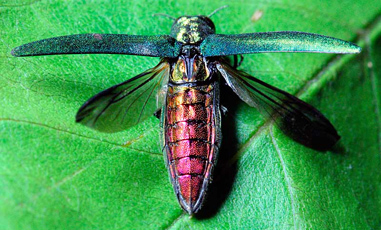Millions of tiny wasps that are natural parasites for the emerald ash borer have been released into wooded areas in 24 states of the US to try and peg back the tree-killing insect’s advances.
The US Department of Agriculture has researched and approved for release four species of parasitic wasps that naturally target the larval and egg stages of the ash borer, which has killed an estimated 38m ash trees in urban and residential areas. The estimated cost of treating, removing and replacing the lost trees is $25bn, according to a report written by USDA and US Forest Service entomologists.
On average, federal and state resource managers spend more than $29m per year to manage ash borer populations.
Ash trees in Britain and on the European continent are also under threat from the emerald ash borer.
The tiniest of the wasps looks like a pepper flake on a white surface. It lays eggs inside ash borer eggs, preventing them from hatching. Three other wasps, one the size of a gnat, lay eggs inside ash borer larvae, halting development into adult beetles.
They were identified in China in 2002 and studied for several years before scientists concluded they could be safety released in the United States to fight the ash borer.
The wasp release program was taking place in 24 of the 26 states where the ash borer has been found, said entomologist Ben Slager, the manager of the laboratory in Brighton, Michigan, producing the wasps run by the US Animal and Plant Health Inspection Service, a USDA agency. There are further plans to distribute wasps to Texas and Georgia, the final two states not yet in the program.
“This isn’t going to save anybody’s tree in their yard or in the city. What we’re working to do is to protect the next generation coming up,” Slager said. “It’s really a long-term management strategy.”

Emerald Ash Borer, Agrilus planipennis
Credit: hungrypests.org

